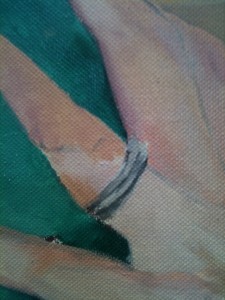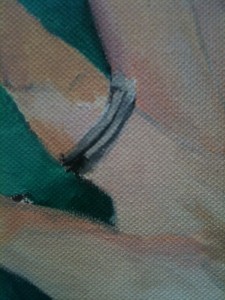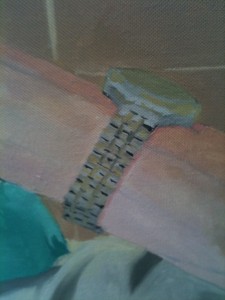Self-Portrait in Oils, day 15
Fun with non-metallic metallicsToday’s painting was all about putting metal into the painting. Real metal paints would reflect badly and look flat; the painting, as in a photograph, has to represent the shine of metal without itself shining. There is a miniature-painting technique called NMM, or non-metallic metallics, which I never quite managed to master, but which is relevant here. A quick look at this tutorial will show you what it is, and its effect. (Did you know you can click the middle button on a mouse to open a link in a new tab? You can.) I have done some photoshopped NMM, which is easy enough. Put greys next to each other and wiggle the blur pointer, and they blend and look like brushed or polished steel. In this case, I was going for something very like that. My watch is steel with gold-looking bits and my rings are platinum, which dulls down whenever the polish plating wears off. What I had to do was get the right reflections into the rings, and set up the moulding for the right reflections on the next paint layer, for the watch.
After the rings, which were a warm-up, I was on to the really difficult part of the day. My watch has a metal strap with five columns of metal, steel-gold-steel-gold-steel, all offset from each other:
The shadows went in after the greys, but before the orange-yellows that are doing service for gold plating. That meant that I could drag them around with my brush when the gold went on, which is what leads to them being harder in the columns where there is no gold; they have not been disrupted. I will paint over them next time without strengthening them, and that should leave them with the right appearance. For this, I used my smallest oil brushes, and I was considering taking in my acrylic set and ruining them with white spirit. However, the watch is not the central part of the picture, and so leaving it at a slightly lower detail level is desirable as well as acceptable. So that was my day; rather technical, and a return to my old minis habits. Blood for the Blood God! Skulls for the Skull Throne! (And if that went past you, be glad. Warhammer is an expensive hobby.) |


